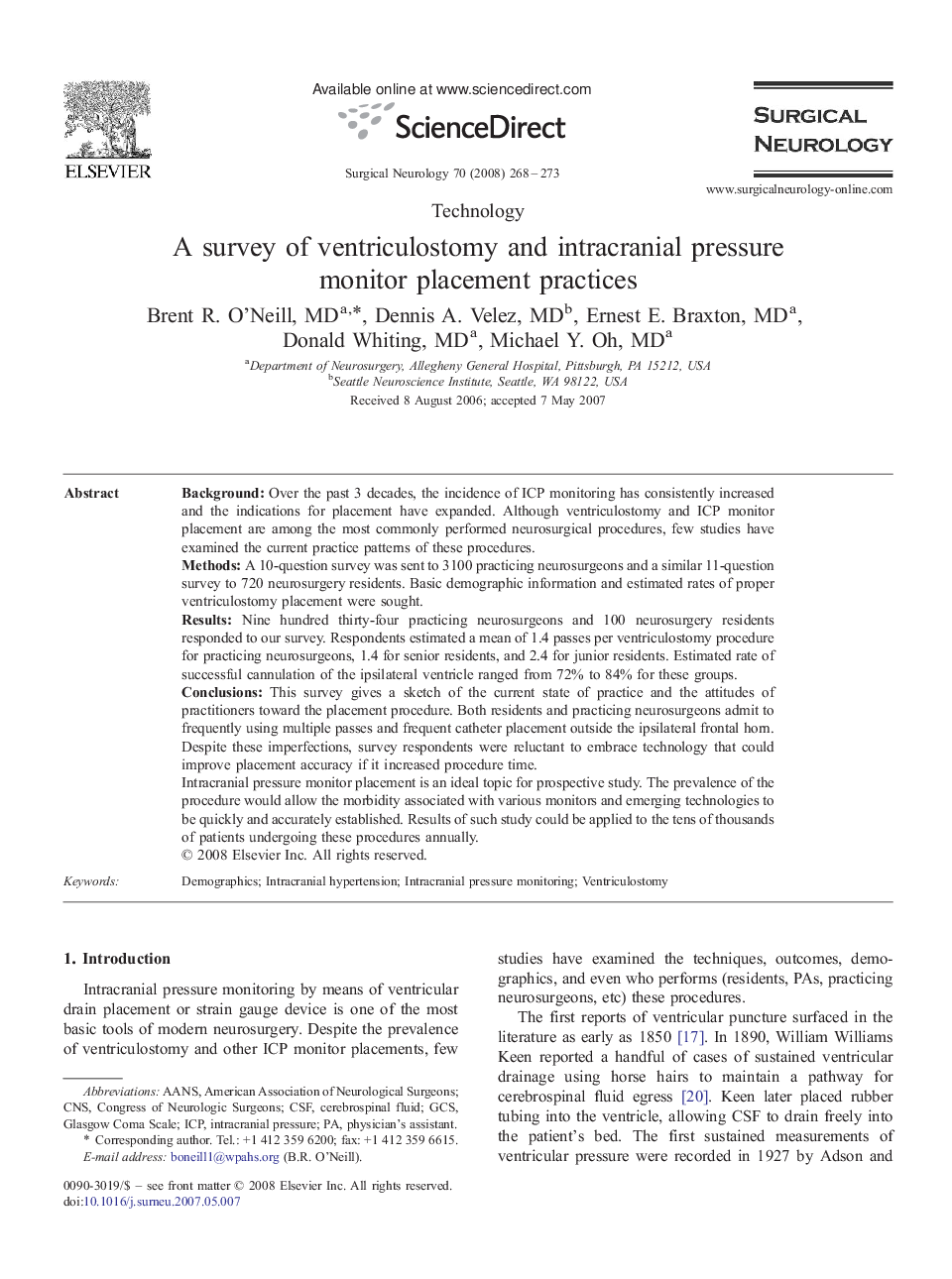| Article ID | Journal | Published Year | Pages | File Type |
|---|---|---|---|---|
| 3092780 | Surgical Neurology | 2008 | 6 Pages |
BackgroundOver the past 3 decades, the incidence of ICP monitoring has consistently increased and the indications for placement have expanded. Although ventriculostomy and ICP monitor placement are among the most commonly performed neurosurgical procedures, few studies have examined the current practice patterns of these procedures.MethodsA 10-question survey was sent to 3100 practicing neurosurgeons and a similar 11-question survey to 720 neurosurgery residents. Basic demographic information and estimated rates of proper ventriculostomy placement were sought.ResultsNine hundred thirty-four practicing neurosurgeons and 100 neurosurgery residents responded to our survey. Respondents estimated a mean of 1.4 passes per ventriculostomy procedure for practicing neurosurgeons, 1.4 for senior residents, and 2.4 for junior residents. Estimated rate of successful cannulation of the ipsilateral ventricle ranged from 72% to 84% for these groups.ConclusionsThis survey gives a sketch of the current state of practice and the attitudes of practitioners toward the placement procedure. Both residents and practicing neurosurgeons admit to frequently using multiple passes and frequent catheter placement outside the ipsilateral frontal horn. Despite these imperfections, survey respondents were reluctant to embrace technology that could improve placement accuracy if it increased procedure time.Intracranial pressure monitor placement is an ideal topic for prospective study. The prevalence of the procedure would allow the morbidity associated with various monitors and emerging technologies to be quickly and accurately established. Results of such study could be applied to the tens of thousands of patients undergoing these procedures annually.
